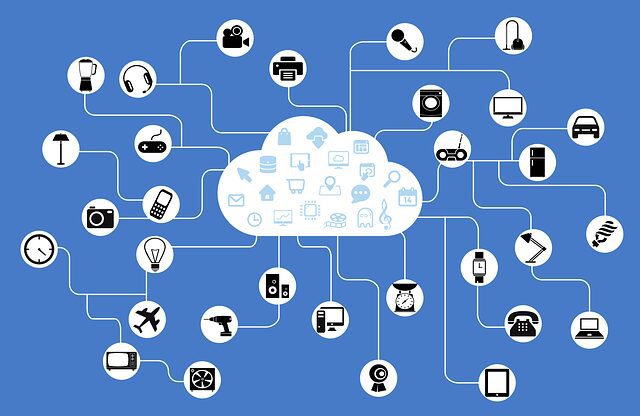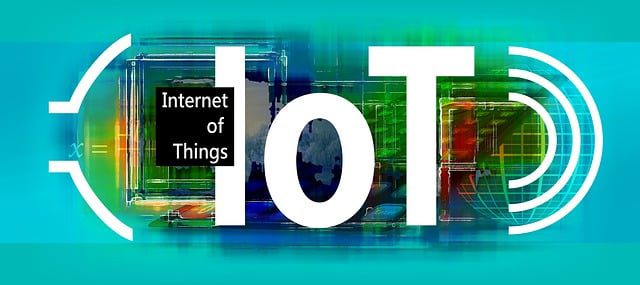Contents
Introduction Of Internet Of Things IoT:
In this new era of 2023-24 where we can interact with technology in a revolutionary world called the Internet of Things (IoT). It is a network of interconnected devices and systems that communicate and exchange data, enabling us to gather valuable information and automate processes. However, behind this remarkable Infrastructure Technology lies a robust IoT infrastructure that supports its functionality and connectivity. here, we will explore the new 2023-24 world of IoT infrastructure in simple terms, shedding light on its components and how it works to create a seamless and interconnected ecosystem.
What is IoT Infrastructure?
IoT infrastructure refers to the underlying framework and components that enable the functioning and connectivity of IoT devices. It comprises hardware, software, networks, protocols, and cloud-based systems, working together to facilitate data transfer, storage, and analysis.
Components of IoT Infrastructure:
Devices and Sensors:
Internet of things IoT devices and sensors are the building blocks of this infrastructure. These devices can range from simple sensors to complex gadgets like smart thermostats, wearable devices, and industrial machinery. They collect and transmit data to other connected devices or centralized systems.
Connectivity:
The connectivity element of internet of things IoT infrastructure ensures that devices can communicate with each other and transfer data securely. Various communication technologies, including Wi-Fi, cellular networks, Bluetooth, and RFID (Radio-Frequency Identification), are used to accomplish this. Devices can connect locally or globally using these technologies, depending on the needs of the application.
Networks:
Internet of things IoT networks facilitate the transmission of data between devices and the cloud. Personal area networks (PANs), local area networks (LANs), and wide area networks (WANs) are the three categories into which they can be divided. PANs are used to connect wearable technology to smartphones, for example. LANs offer connectivity in a constrained space, such as a house or office. WANs allow for long-distance connections and are used in massive deployments like smart cities.
Cloud Computing:
Cloud computing plays a crucial role in IoT infrastructure by providing storage, processing power, and scalability. IoT devices generate massive amounts of data, and the cloud acts as a centralized hub for storing and analyzing this data. Cloud-based platforms offer the flexibility to scale resources based on demand and enable real-time data processing and insights.
Data Security:
As IoT devices become more prevalent, ensuring the security and privacy of data becomes paramount. IoT infrastructure incorporates security measures to protect sensitive information from unauthorized access. Encryption techniques, secure protocols, and authentication mechanisms are implemented to safeguard data during transmission and storage.
How Does IoT Infrastructure Work?

Internet of things (IoT)
The IoT infrastructure operates in a seamless cycle of data collection, transmission, and analysis:
Data Collection:
Sensors on Internet of Things (IoT) devices allow them to gather environmental data. This can consist of data about the surrounding environment, user interactions, machine metrics, and more. Physical parameters are transformed by the sensors into digital data, which is then transmitted for additional processing.
Data Transmission:
The collected data is transmitted from the IoT devices to the cloud or other connected devices. This communication can happen wirelessly through networks like Wi-Fi or cellular connections. The data is packaged and sent securely, ensuring its integrity during transit.
Data Processing and Analysis:
Once the data reaches the cloud, it undergoes processing and analysis. Cloud-based systems handle the computation-intensive tasks, such as data filtering, aggregation, and pattern recognition. Advanced analytics techniques, such as machine learning and artificial intelligence, are employed to derive meaningful insights from the collected data.
Decision Making and Automation:
Based on the analyzed data, decisions can be made in real-time to trigger actions or automate processes. For instance, in a smart home, the data from various sensors can be used to adjust temperature settings, control lighting, or optimize energy usage automatically.
CONCLUSION:
- IoT infrastructure is the underlying framework that supports the functionality and connectivity of IoT devices.
- It consists of components such as devices, sensors, connectivity options, networks, cloud computing, and data security measures.
- Sensors and IoT devices gather information from their surroundings, which is then sent to the cloud or other connected devices for additional processing.
- Connectivity options include technologies like Wi-Fi, cellular networks, Bluetooth, and RFID, enabling devices to communicate locally or globally.
- PANs, LANs, and WANs are examples of IoT networks that make it easier to send data between devices and the cloud.
- Cloud computing provides storage, processing power, and scalability for the massive amounts of data generated by IoT devices.
- Data security measures, including encryption, secure protocols, and authentication mechanisms, protect sensitive information during transmission and storage.
- IoT infrastructure works in a cycle of data collection, transmission, processing, and analysis, leading to actionable insights and automation.
- Industries such as healthcare, manufacturing, transportation, and agriculture can benefit from IoT infrastructure by improving efficiency and decision-making processes.
- IoT infrastructure enables the development of smart homes, smart cities, and other innovative applications that enhance convenience and sustainability.
- It is crucial to address data security and privacy challenges to protect sensitive information as the number of connected devices increases.
- Innovation, collaboration, and standardization are key to maximizing the potential of IoT infrastructure and creating a truly connected world.
Frequently Asked Question’s (FAQ’s)
Q.1: What is IoT infrastructure?
IoT infrastructure refers to the underlying framework and components that support the functionality and connectivity of IoT devices. It includes devices, sensors, connectivity options, networks, cloud computing, and data security measures.
Q.2: What are the components of IoT infrastructure?
Devices, sensors, connectivity options (like Wi-Fi, cellular networks, Bluetooth, and RFID), networks (PANs, LANs, and WANs), cloud computing, and data security controls are all elements of IoT infrastructure.
Q.3: How does IoT infrastructure work?
IoT infrastructure collects data from devices and sensors, transmits it using a variety of connectivity options, processes and analyses the data in the cloud, and then makes it possible to automate processes and make decisions based on the data’s insights.
Q.4: What are the benefits of IoT infrastructure?
IoT infrastructure has many advantages. In sectors like healthcare, manufacturing, transportation, and agriculture, it enhances productivity, efficiency, and decision-making procedures. It makes it possible to create smart homes and cities, which improve comfort, energy efficiency, and sustainability.
Q.5: How is data security addressed in IoT infrastructure?
Data security is a crucial aspect of IoT infrastructure. Encryption techniques, secure protocols, and authentication mechanisms are implemented to protect sensitive information during data transmission and storage. Robust security measures are essential as the number of connected devices increases.
Q.6: What role does cloud computing play in IoT infrastructure?
A crucial component of the IoT infrastructure is cloud computing. To manage the enormous amounts of data produced by IoT devices, it offers storage, processing power, and scalability. Real-time data processing, analysis, and storage are made possible by cloud-based platforms.
Q.7: How can IoT infrastructure be utilized in different industries?
IoT infrastructure has diverse applications across industries. In healthcare, it can improve patient monitoring and remote healthcare services. In manufacturing, it enhances automation and predictive maintenance. In transportation, it enables fleet management and smart traffic systems. In agriculture, it improves crop monitoring and irrigation.
Q.8: What is the future of IoT infrastructure?
The future of IoT infrastructure is promising. With advancements in technology, we can expect more connected devices, improved interoperability, and increased adoption across industries. Standardization, innovation, and collaboration will play a crucial role in maximizing the potential of IoT infrastructure.

